
Non-Allergic Rhinitis
(Kỳ 2)
Rhinitis Medicamentosa
Rhinitis medicamentosa (RM) is a condition that caused by overuse of
topical nasal steroids. Also known as rebound or chemical rhinitis, the incidence
is somewhere between 1-9% of non-allergic rhinitis and it is more common in
younger adults and pregnant women.
To understand the cause of RM, we must first look at some of the basic
science behind the nasal mucosa. The mucosa is innervated by sympathetic fiber
that release norepinephrine, which stimulate alpha 1 and alpha 2 receptors. This in
turns causes vasoconstriction.
The sympathomimetic amines and imidazoline derivatives (phenylephrin
and oxymetazoline, respectively) both produce vasoconstriction by endogenous
release of norepinephrine.
The problem arises with prolonged use. This leads to reduced production
of norepinephrine in the presynapes and decreased sensitivity of the alpha

receptors in the postsynapes, which in turn requires higher doses for shorter acting
time. This cycle of excess dose use and decrease symptomatic relief will lead to
worsening of the original symptoms.
The risk of RM is greatest after 10 days use of medications. Treatment
includes gradual stopping of decongestant with introduction of topical
corticosteroid. This will lead to a temporary increase in symptoms and patents
should be warned beforehand of this and to not restart the original medication.
Patients should be off the medication for 3 months before starting any other
surgical or medical treatment for the original nasal disease.
NARES
NARES (non-allergic rhinitis with eosinophilia syndrome) is another non-
allergic entity that is defined as rhinitis without allergic cause but has 20-25%
eosiniophils seen on nasal smears. As with the other NAR disease, there is lack of
allergy by skin test or IgE antibodies. Prevalence is 13-33% of NAR.
NARES etiology is unknown. However, it is believed to be associated with
the ASA triad as NARES patients tend to develop asthma and nasal polyps later in
life and they tend to have abnormal prostaglandin metabolism. And yet,
eosinophilic counts are elevated in 20% of the nasal smears in the general
population and not everyone with eosinophilias have symptom of rhinitis.

Recent studies by Powe et al (2001) show that NARES is a local IgE
mediated response that does not result in a systemic response. They found that
50% of non-allergic rhinitis pt that had a negative skin prick test were found to
have positive result to nasal allergy challenge. Therefore, skin prick tes negative
pt with eosinophilia may require allergen challenge nasally before diagnosis of
non-allergic rhinitis. This is important to know, because NARES is a subset of
non-allergic rhinitis who responds better to nasal corticosteroids than other non-
allergic rhinitis groups.
Hormonal Rhinitis
Hormonal rhinitis (HR) is defined as rhinitis during period so known
hormonal imbalance. Estrogens are known to affect the autonomic nervous
system by increasing a host of factor including parasympathetics, acetyl choline
transferase, and acytycholine content, and also increase inhibition of sympathetic
system. Therefore, the most common causes are pregnancy, menstruation, puberty
and exogenous estrogen. With pregnancy, HR usually manifests in the second
month and will continue throughout pregnancy.
Hypothyroidism is also known to cause hormonal rhinitis. In
hypothyroidism, increase TSH release causes edema of the turbinates. Nasal
congestion and rhinorrhea are the most common symptoms of RH.
Idiopathic rhinitis

Next we come to Idiopathic rhinitis (IR). This is also known as vasomotor
rhinitis and is characterized by nasal blockage and rhinorrhea, with some sneezing
and pruritis. Etiology is unclear, with failed attempts to differentiate by
hyperactivity to histamine, methacholine, cold air or capsaicin. IR is solely
diagnosed by patient complaints and therefore a diagnosis of exclusion.
The exclusion criteria include: having positive skin test, smoking, nasal
polyps, pregnancy, medications affecting nasal function, and good response to
nasal steroids. Pt who have a good response to nasal steroids tend to have
NARES.
IR is not believed to be caused by inflammation. IR patients have no
significant increase in mucosal lymphocytes, antigen presenting cells, eosinophils,
macrophages, mast cells or IgE positive cells compared to controls. And studies
have shown a reduction in immunocompetent cells in the mucosa of IR pt after
treatment with nasal steroids did not reduce nasal complaints.
Others
Finally we come to the last group of NAR, the other category. There are a
number of conditions that can produce the same signs and symptoms of rhinitis.
These include structural conditions like deviated septum, nasal tumors, enlarged
adenoids or turbinates, and atrophic rhinitis. One must also look for mimicker like
Wegener’s, sarcoidosis, and polychondritis.

Diagnosis
To provide an accurate diagnosis, one must always start with complete
history and physical exam.
Here are some pertinent questions to ask with the history:
What are your nasal an sinus symptoms and do they include
discharge, congestion, PND, sneezing, itching?
Do you have environmental allergies, undergone skin testing,
or been treated for allergies?
Are there certain situations, environment in which symptoms
are worse like home, work, indoors, outdoors, times of the year or day?
What is your work, are there exposures to chemicals? Do
your symptoms begin with medications or do any medications help your
symptoms?
Do you have asthma, allergy to aspirin, or any sinus polyps?
Have you undergone any sinus surgeries?

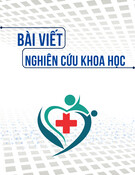
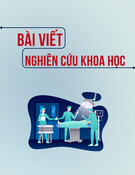


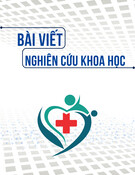


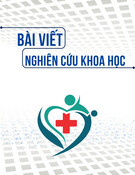
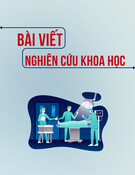

![Bài tập Con người và sức khỏe: [Mô tả chi tiết hoặc lợi ích của bài tập]](https://cdn.tailieu.vn/images/document/thumbnail/2025/20251123/thaohoang9203@gmail.com/135x160/95031763951303.jpg)



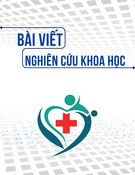


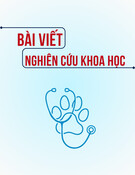
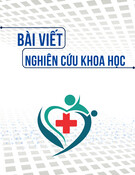

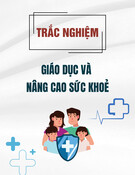
![Trắc nghiệm Chăm sóc sức khỏe cộng đồng [Mới nhất]](https://cdn.tailieu.vn/images/document/thumbnail/2025/20251114/kimphuong1001/135x160/99881763114353.jpg)



